Follow the Leaders
Filtroil President Shares Lessons on International Expansion
When is it right to break into international territory? For Jeremy Leahman, the second time was the charm. With a nudge from his biggest client and guidance from a knowledgeable local resource, he’s become a bit of an international markets expert – even sharing his experience at the world’s largest industrial trade show this year. We sat down with him shortly after that to learn about his experience and how his business has changed. We also asked for a few pieces of advice for CEOs considering a move into an international territory.
Meet Jeremy Leahman
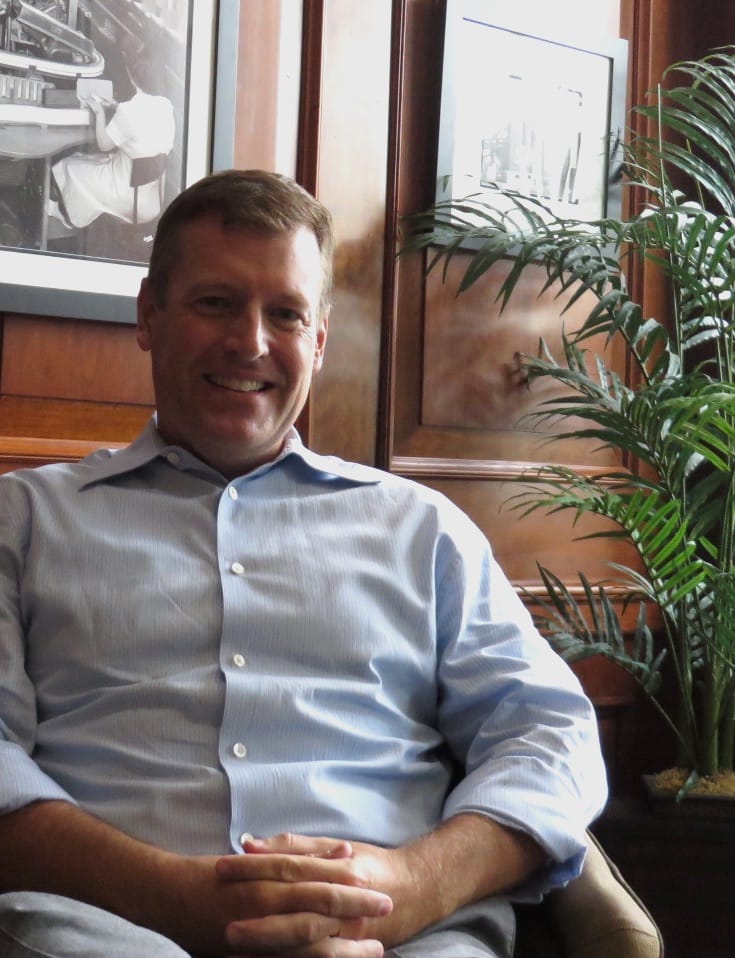 Leahman is president of Filtroil, he’s also a serial entrepreneur and four-year member of the Virginia Council of CEOs. He began his career at Filtroil in 1994 as a salesperson and was quickly groomed to become president – a post he accepted 1998.
Leahman is president of Filtroil, he’s also a serial entrepreneur and four-year member of the Virginia Council of CEOs. He began his career at Filtroil in 1994 as a salesperson and was quickly groomed to become president – a post he accepted 1998.
“Any industrial manufacturer uses oil in their assets, and that oil is the lifeblood of their machine,” explains Leahman. “We offer a niche filtration product that filters oil about five grades cleaner than new oil and keeps it that clean over the life of the equipment.” Filtroil’s systems are primarily an after-market product, sold by a distribution channel to those in the mining, cement, paper mill, metal stamping, construction, injection molding and trucking industries to name a few.
Filtroil Goes International: Take One
Filtroil’s first launch into Europe in the late 90s was, in Leahman’s words, “not successful.” “We opened up a lot of distributors, but none were really active, and the cost of doing business was very high,” he says. The events of September 11 and the downturn in the economy, coupled with Leahman’s attempt to launch three other businesses, fractured his profit margins.
Still believing his product had a future in international markets, Leahman hired a sales director in 2005 to cover the Latin American market. Around that time, he also streamlined his production costs, relocating one of his international manufacturing facilities from Japan to China and later started a joint venture there. Even so, it was a heart-to-heart conversation – not a manufacturing or operations decision – that ultimately proved to be the magic bullet for Filtroil.
When Your Biggest Client Says, “We Want To See More”
After graduating from the Darden School of Business at the University of Virginia Leahman was awarded its biggest contract with multinational oil and gas giant Exxon Mobil. Leahman recalls the advice he got from the company. “In 2008, Exxon Mobil said to me, ‘Hey, your product line is limited. It’s a niche product. It’s a great niche product, but it only works for a small portion of the oil sold in our industry. You need to make more filtration products – products that filter not only hydraulic oil, but also gear oils, engine oils and phosphate ester fluids. Additionally, it needs to work for many different applications in multiple industries, because distributors want broad product lines that cover the general industrial market to heavy duty equipment.’”
So Leahman got busy. Fast-forward to 2016, and his product line is much more extensive, and he’s ready to get serious about Europe.
Filtroil Goes International: Take Two
Leahman learned through his joint venture project in China that government agencies like the U.S. Commercial Service and the Virginia Economic Development Partnership (VEDP) can offer U.S. businesses vital information and resources at very little cost.
Leahman knew it was vital to Filtroil’s growth for him to attend the largest industrial show in the world – Hannover Messe – so he called Josh Kaplan, the local contact for U.S. Commercial Service. As it turned out, the U.S. was the official partner country for Hannover Messe for 2016, which meant millions of dollars’ worth of services were being offered through government agencies like Commercial Service to U.S. companies with an interest in attending.
“U.S. Commercial Service had so much infrastructure in place there,” says Leahman. “I was hammered with pre-marketing opportunities. It was amazing. I had 22 appointments set up before I even got to the show.” Kaplan also told Leahman about a VEDP program that could help him cover his booth expense. (To learn more, read “Filtroil Finds New International Customers through State Export Program Grant.”)
Filtroil Today
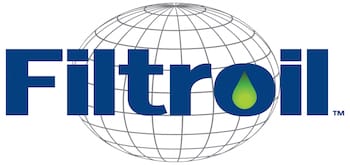 Leahman says his participation in Hannover Messe has paid off, as he has recently secured contracts with five solid distributors and has tallied sales in India, Portugal, Denmark, Bolivia and Poland. And, says Leahman, “That’s just the tip of the iceberg.”
Leahman says his participation in Hannover Messe has paid off, as he has recently secured contracts with five solid distributors and has tallied sales in India, Portugal, Denmark, Bolivia and Poland. And, says Leahman, “That’s just the tip of the iceberg.”
These days, Leahman meets once a month with Josh Kaplan, making sure he stays on top of leads from Hannover Messe. Leahman is also considering other state-supported programs, like the VEDP website translation program he just heard about, and a trade mission trip to South Africa. He’s hired a marketing and West Coast salesperson to handle his growing workload, and his sales director in Latin American is doing well.
This coming February, Leahman plans to attend the US Commercial Service, Discover Global Markets, Advanced Manufacturing Business Forum Series conference in Scottsdale, Arizona, and rumor has it he may be asked to give a lecture on his experiences with finding new distributors in global markets. While there, he’ll meet with the U.S. Commercial Service officers who have vetted a multiple number of distributors for him to consider, reconnecting him with the international trade managers he met at Messe. The future looks bright.
“For 2017, I see traveling to Europe four or five times. I can see setting up a warehouse with stocked inventory, and I would like to have 10 new distributors in place, with three that are really active and moving a lot of product.”
Considering Expansion Overseas? Six Lessons From Jeremy Leahman
Considering expansion abroad? Here’s some advice from a VACEOs member.
- Don’t expand internationally without the support of the U.S. government.
“There’s a lot of money available out there that I didn’t know about,” says Leahman. “If I had known about U.S. Commercial Service, I would’ve entered the market much more quickly. Your first call should be to them if you’re ready to go overseas. They will also help you conduct thorough due diligence to mitigate any risks.” - Take a focused approach.
“Be careful of spreading yourself too thin. You want to throw enough into the hopper so that you’ve filled the funnel, but you don’t want to overexpose yourself.” Leahman admits that in the past he has set up 50 or more distributors in a geography and hoped for the best. Those days are over. His new approach balances due diligence and his ability to travel in a cost-effective manner. - Invest wisely.
“You can’t just put your product in literature and expect a sale. You have to support your sales team and regularly travel with them.” Leahman estimates that each distributor costs him approximately $50,000 in product, travel time and effort, so it makes sense to weed out the distributors that aren’t a good fit before you make a trip overseas. U.S. Commercial Service’s International Partner Search and Gold Key Service are designed to do the due diligence for you for a very nominal fee. Of International Partner Search and Gold Key service, Leahman says, “It’s the best deal on the planet. Nothing I have come across in business in the last 22 years has been so cost effective.” - To be local or not? That is the question.
“One thing you need to decide is if you’ll have a local presence or not,” says Leahman. “It really depends on the size of your company. If you’re a medium to large manufacturer, you will need to have some kind of presence there. This is something U.S. Commercial Service can help with. In my case, the trade manager from the Netherlands, whom I found through my Commercial Service contact, helped me find a strategically located warehouse to supply product all throughout Europe.” - Setting up a distribution network? Be wary of distributor terms.
“I met with the Export-Import Bank of the United States at Hannover Messe and found that it’s not wise to take distributor terms for payment or collection. Use the Bank instead. For less than a 1% transaction fee, depending on the country, the Bank will guarantee any order up to 95%. So, for example, if I have a distributor in India who places a $100,000 order, I’m guaranteed 95% of that money, even if they don’t pay the bill. You’ll need to fill out some paperwork for each distributor to be protected by this program but it’s well worth.” - Got proprietary intellectual property? Protect it.
“If you have a patent or proprietary products or ideas, make sure you fill out the right global patent applications. You don’t want someone overseas stealing your ideas. Some countries have lots of protection built in place while others are far behind, so make yourself knowledgeable about specific geographies if you have something worth protecting. There are a lot of resources out there to help you with that.”
HourWise Growth Up 280%

Imagine having your very own in-house Business Idea Incubator. A place where new ideas are organically hatched and resources are on hand to quickly cultivate and test ideas before they’re launched on a national scale.
For a small or mid-sized business, it sounds like heaven. A CEO’s dream. And it’s exactly the enviable position in which HourWise Co-founder Ethan Wirt finds himself.
HourWise was a result of the experience Wirt gained with his first company, 89-Paint. It was there he learned firsthand what it takes to run a contracting business, including the back-office challenges of managing contractors. Now, thanks to 89-Paint, his new business is ripe for penetrating an estimated $1 trillion marketplace.
We caught up with Wirt just days after he moved into his new, larger space in Richmond near Legend Brewery. He was so new to the space that his internet connection wasn’t up and running, and his team was still in transition.
89-PAINT GIVES BIRTH TO HOURWISE
“When I started 89-Paint in 2007, I set out to professionalize a market that’s not always known to be that professional by using unique processes and new technology to scale a better way of getting your projects painted and for the contractors who do it,” says Wirt. “And through that experience, HourWise was born.”
“We knew from what we learned in building that company that we could extract really cool tools and software that was applicable to any contracting company around the country,” Wirt adds “Even today, 89-Paint continues to be a lab for us, where we can test out ideas and test our software and our processes before we take them out to the rest of the world.”
How would Wirt describe HourWise? “Our technology facilitates a process and gives our clients access to a fractional person to help triage every opportunity they have in their business, through life cycle to cash,” he explains. “So if you can imagine, the average paint contractor loves painting, and he’s really good at it and running his crews, but he doesn’t know how to do all the other ‘stuff’ it takes to run his business. HourWise does all the other ‘stuff.’”
HourWise’s services include scheduling, providing quotes, managing invoices and customer follow-ups, and more. Think outsourced office assistance and business partner. The executive leadership team includes co-founders Ethan Wirt and Jon Hill, as well as COO Jason Bello.
Hourwise User Growth up 280%
HourWise was launched in 2012 and began to see rapid growth in 2014, after acceptance into the Lighthouse Labs Accelerator Program. Since then, the company has raised over $750K in seed capital from various strategic and supportive fans within the program.
In the final quarter of 2015, HourWise reported a 280 percent uptick in user growth, and today the company is hiring and finds itself in partnership discussions with big box home improvement stores.
“We’re at 25 employees and growing,” says Wirt. “We’ve been taking on 10 new clients a week and managing 20,000 tasks or so a month for our clients to make their lives easier.”
Wirt estimates there are roughly 1.7 million potential customers for his service, equating to roughly a $1 trillion marketplace. His goal is to reach 100,000 users by the end of 2020.
Such rapid growth often brings pain. Helping him through it, says Wirt, is VACEOs Roundtable #3. “It was really valuable for me to find a group of men and women who knew exactly what I was dealing with,” he explains. “The Council is such a great place to find your clan.” What else does he say about VACEOs? Watch the video.
Getting Personal with Mike Matthews, VACEOs Chair
Mike Matthews’ office, like the man himself, exudes a certain level of equanimity. Save for the few international embassy mugs he’s collected from Hankins & Anderson business trips, his ample desk, set in a sleek, contemporary setting, is clutter free. Wonderfully warm light emanates from a full wall of windows.
To know Mike on paper is to know that he has worked for Hankins & Anderson (H&A) nearly all his professional life, growing the $4 million company to $40 million after taking the helm 20 years ago. But to discover the person is to find a humble teacher and individual who is passionate about his team and his desire for continuous improvement.
He’s a doer and community builder. A free spirit. A family man. And even on the golf course, his perspective rings true to his good nature. We recently sat down with the current VACEOs Chair, and here’s what we learned.
Q: You have an engineering background, and you’re the CEO of a highly successful international architecture and engineering firm. Some folks might be surprised to know you’re a bit of a free spirit. I understand you took an interesting trip after you graduated high school.
“I took to the open road with a friend and lived in the back of a truck after high school. I wasn’t ready to go to college. I was a low-to-medium-level student, and I wasn’t ready to go back and hit the books in college. We spent 10 months traveling around the country. I saw 30 states, and I worked at a gas station in Miami, a ski resort in Vermont, and an oil field in Texas. When I came back, I was a lot more ready to be a student … not that I was a stellar student in college! But I was ready to do it and take it on.”
Q: You’re currently the president and CEO of Hankins & Anderson and you’ve been with them for nearly 28 years. Briefly describe your journey to the helm.
“When I was in college, I went to my high school drafting instructor and asked him where I could find a good summer job. He recommended Hankins & Anderson. I worked as a draftsman for the company that summer and the next. When I got out of school, I worked for another firm for four and a half years that was a spinoff of H&A. I also did a stint as a manufacturing sales rep. That position didn’t suit me well, so when I got a call from H&A to come back as a staff engineer, I took it.
I worked my way up, eventually being promoted to VP in charge of our Fairfax, Virginia, office. Only eight months into that position, I was asked to be a part of an ownership and leadership transition team. The brilliant consulting firm in charge of the transition recommended me for the job. I say ‘brilliant’ because they recommended me!” (He says very jokingly.)
Q: What management qualities does a leader need to possess to run a large and highly successful company like H&A?
“You’re going to hate me, but it’s all cliché stuff. It’s about having a vision and having everyone able to rally around that vision. It’s also about being able to inspire people and being able to communicate effectively. It’s important to be transparent.
For example, about every two weeks, we have a CEO breakfast here where we randomly ask 15 to 20 employees to attend. Everyone puts a question in an envelope for me. Some choose to stay anonymous, and that’s OK. I answer each one at the breakfast. It helps to beat the rumor mill, but more importantly, it keeps us all on the same page. Also, I’m extremely proud of the leadership team I’ve been able to bring here. They all work together and are always challenging each other.”
Q: One of your core values at H&A is a commitment to continuous learning and self-improvement. Is that one reason you decided to become an adjunct instructor at the University of Richmond?
“What’s the old adage? ‘Learn a subject, take a class. Master a subject, teach a class.’? I really enjoy teaching and interacting with the students. I’ve guest-lectured before for many years, but this class gives me an opportunity to fill a void I saw in the business school’s curriculum, and that was teaching students about professional services management – because running an architecture or law firm is very different from other types of business experiences they teach in school.
For example, an architecture firm’s key performance metrics or cost of goods sold is very different from a manufacturing company’s. How you market a professional service is very different, too. I don’t have a widget I can show you and tell you about all its features and benefits; I’ve got to sell you on trusting me as a person. Operations is very different. I’m not managing a production line that’s producing the same widget at so many per hour. Every single thing I do as a lawyer or accountant is different, so I have to approach estimating fees for my services differently.”
Q: You’ve been playing golf for years. What kind of lessons, if any, have you taken from the game?
“My approach to golf is that I don’t expect to be good at it because I don’t work at it, so there’s no pressure! The decisions I make here matter. If I miss a putt, it doesn’t really matter. Golf is a social activity for me. My CEO Forum just went to Daytona and played for our retreat. We had a blast!”
Q: You’re family man, a teacher, a highly successful businessman and the Chair of the VACEOs. How do you stay focused and productive?
A: “I have a routine every morning. I get up early in the morning, get a cup of coffee, go to the nice office I have set up at my home, sit in my really comfortable leather club chair, turn on some soulful piano music and read for an hour. It usually is a business book, but sometimes a fun book – like a grammar book. Yes, I’m a grammar wonk! Sometimes I put a fire on. I really enjoy this time I set aside for myself. Other than that, I take the day as it comes. I’m not a real planner. My staff laughs at me because sometimes I appear to wait until the last minute to do things.”
GroundForce IT Shines During UCI Road World Championships
Well done, Richmond! All the world was watching us during the 2015 UCI Road World Championships, and you represented the region well. It takes a tremendous amount of planning, coordination, sweat and tears to pull off an event estimated to bring in half a million spectators on site and approximately 300 million pairs of eyes via television. But in many ways, for GroundForce IT, the “Official Technology Partner of the UCI Road World Cycling Championships,” the pressure was just part of another day at the office.
REALLY? We were curious. So we caught up with CEO Ethan Seltzer during and after the event to hear his perspective as a sponsor, IT support specialist and cycling fanatic. We wondered, did he have any reservations about putting his business out there in such a big way? Did he have any “OMG” kind of moments? Any regrets? Here’s what he had to say.
Q: Describe the type of work you did for the 2015 UCI Road World Championships.
A: Our job at the race was similar to the type of work we do every day – setting up firewalls, phone systems and wireless networks. In this case, our work supported the broadcasters, commentators and VIPs in the UCI tent. We were on site from September 20 through September 27 to provide IT assistance. We spent approximately 120 man-hours on the project.

Q: As a sponsor of the event, your logo was prominently on display to essentially the world. Did you ever think, “Do we really want to put ourselves out there for such a high-profile opportunity?”
A: Because I’m a cycling fanatic myself, GroundForce IT has been active in sponsoring and physically supporting active events for almost eight years. This, of course, was at a whole different level – think sponsoring a high school match versus an NBA game. Was I a bit nervous? The short answer is “a little bit.” But only after the race started and there was an urgent request to provide additional IT services that were out of the initial scope of the work we were asked to do — which, if there was a glitch, would affect cameras on the course and what the world saw. That was a little intense. No glitches were experienced. In the end, we wanted to bring our “A” game, and we did.
Q: What was one of your favorite or one of the funniest moments you witnessed that the cameras didn’t catch?
A: During the U23 men’s race, several cyclists were using the restroom adjacent to the start/finish line. One cyclist climbed the barricades to get back on his bike with just 30 seconds to go before the race was set to start – to get back to his bike, super-relaxed and cool. Several of us spectating commented on how we’d be a bundle of nerves 30 seconds before a World Championship race!
Q: Did you meet any of the cyclists? Did you have any “OMG” kind of moments?
A: I had the opportunity to meet a few former and current pro cyclists. Bob Roll – “Bobke” – was a very nice guy. He wears EXCEPTIONALLY tight/skinny jeans. Not sure how he fits into them!
Q: If you had the chance to train with a member of the USA Men’s team, who would you choose, and why?
A: That would have to be Ben King. He was born in Richmond, Virginia, and grew up in Charlottesville. He was in the breakaway group of the Men’s Elite race for much of the day on Sunday (September 27) and did both the USA and Virginia proud. I did speak to him very briefly during the week and asked if he’d join the Goochland Mountain Bike Team for a practice. He was exceptionally nice and said if his schedule permitted, he’d be happy to.
Q: Any regrets or “Wish I would’ve…” moments?
A: We are not great promoters of ourselves, so, looking back, we could have done a better job of showcasing our capabilities in the VIP tent and elsewhere. My advice to anyone who’s thinking about becoming involved in an event of this magnitude is to get out of the weeds of the day-to-day and make a solid plan. Think big. Consider hiring a marketing or PR firm to help you if you don’t have the resources in house to “own” the project. Lastly, have a real action plan in place to capitalize on all the various publicity opportunities that happen before, during and after the event.
In Focus: Taradel, Seven Time (and counting) Inc 5000 Company
Gone are the days of selling print to a narrow audience from your bedroom office. Your value proposition and market are cast over a much wider space now. Your new digs, nearly 5,000 square feet.
Your current endeavor has taken you from zero employees to 22 in a quick 10 years. Many measure your success by how many times your business has made the Inc. 5000 Fastest-Growing Companies list (seven and counting).
When asked what one piece of advice you’d give a budding entrepreneur, you say, “Be decisive. You can’t move forward without data points. That was a valuable lesson I learned from a CEO a long time ago. A lot of folks hesitate over whether to make an investment or whether they should make a move. Wrong or right, you’ve got to start somewhere so you have a starting data point. You can’t manage indecisiveness.”
Behold! You’ve have entered the world of Jim Fitzgerald, CEO of Taradel. Three-time successful entrepreneur. Print-and-deliver mega-star. VACEOs member.
TARADEL: ON THE WINGS OF SMALL BUSINESS
Jim Fitzgerald started what would later become Taradel in 2003. From a small desk in a spare bedroom, he crafted a simple plan to make full use of his extensive print and design knowledge. His goal was to offer an inexpensive, high-quality, fast-print advertising insert solution for the newspaper industry. When his idea came to fruition, his newspaper clients were wild about the ROI, and small business advertisers were wild about the newspapers’ reach and the customized direct mail piece that was produced. It was a win-win for all.
It didn’t take long before Fitzgerald’s business model evolved. He explains, “I got to the point where I couldn’t scale the business, so I found a web developer and built a website where the customers could place their orders themselves. It wasn’t long after that I realized we had two really good assets: great pricing on a product with wide demand and a great online web-to-print engine. We dressed it up and started offering those print products to everyone. That was in 2004.”
Today, Fitzgerald describes Taradel as a place where small business owners can create a targeted direct mail campaign in under 10 minutes. Dig deeper and we quickly learn his value proposition is much more extensive. Turns out Taradel has an eye for data and digital, too. The company is heavy into things like data mining and heat mapping databases, building custom integrated websites and campaigns that span marketing disciplines.
Fitzgerald’s target market is still small businesses owners, but Taradel now works with national franchisors, as well. The company has also recently expanded into Canada.
SEVEN-TIME REPEATER. WHAT’S THE SECRET?
To date, Taradel has made the Inc. 5000 Fasting-Growing Companies list seven times, coming in at #2480 for 2014. Fitzgerald absolutely expects to hear from the Inc. team again this August. Very few businesses can claim this remarkable status. What’s his secret?
“Hire great people,” says Fitzgerald. “It sounds silly, but I talk to a lot of colleagues who have problems with their staff. By ‘great,’ I mean – and I’m stealing from Cameron Herold, who I heard speak at the last VACEOs Retreat – I don’t ever motivate people. I hire motivated people. When we bring someone in, they will meet at least six or seven team members. When the team gets together to talk about that candidate, if it’s not a collective ‘hell, yeah,’ then it’s a no. It’s that simple. Whenever we violate that rule, we regret it.”
Another key? “Build a world-class inbound marketing platform,” he says. “We get a hundred leads a day. We never make a cold call. We use a variety of methods for inbound, including SEO, search engine marketing, display advertising, content generation and automated marketing campaigns. Once people look for the products we sell, there’s a very good chance they will land on our website.”
A sense of urgency also fuels Taradel’s success. Sure, the company is pretty much guaranteed to make the next Inc. 5000 list, but there isn’t an unlimited amount a capital available, says Fitzgerald. He says, jokingly, “We eat what we kill. Every week, we have to hit a number, and that creates a sense of urgency in the environment. I also think that’s an important reason for our growth.”
ONWARD AND UPWARD
Taradel recently secured a large Canadian account, and Fitzgerald reports that he’s hopeful new opportunities in Australia and England will be finalized soon. In the meantime, he’s firmly focused on his current customer base.
“We’ve recently customized a website for a client that integrates our email and direct mail databases and marketing initiatives for them,” says Fitzgerald. “That’s really exciting! Our website will soon have an integrated marketing road map for business owners. From our site, you’ll be able to generate integrated direct mail, email, Facebook and display advertising campaigns to a specific target audience in about 10 minutes.”
Is Fitzgerald worried that direct mail and print – his original bread and butter – might be going away? It doesn’t appear so.
“Here’s why I love print. If I go to a meeting with CEOs and ask for those who understand how direct mail works, most will raise their hands. If I ask how re-marketing or pay-per-click advertising works, much fewer hands go up. My point is everyone understands direct mail. The reality from our perspective is that print is out-producing digital media in measurable terms. We see direct mail as an important part of an integrated marketing campaign and an important bridge to the digital side of marketing, which we understand very well. At the end of the day, we want to make it easy for any small business to create integrated campaigns.”
Imagine you had a network of resources to help you navigate through the complex challenges you face each day as a leader. A group of like-minded people to help guide you through your questions about finances, employee concerns or marketing issues. You do in the Virginia Council of CEOs.
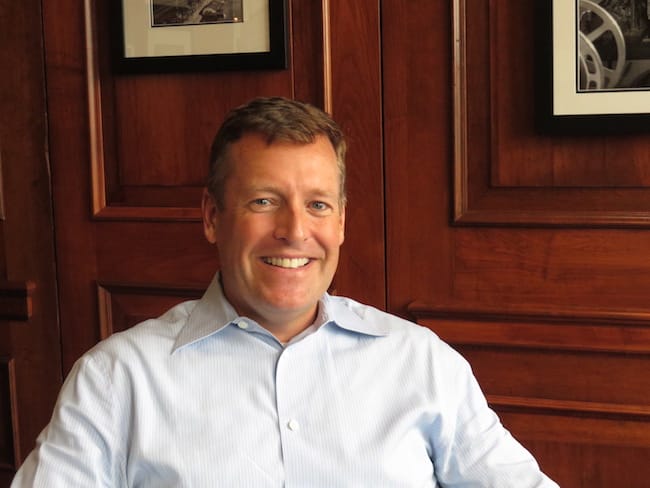
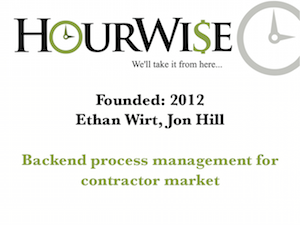

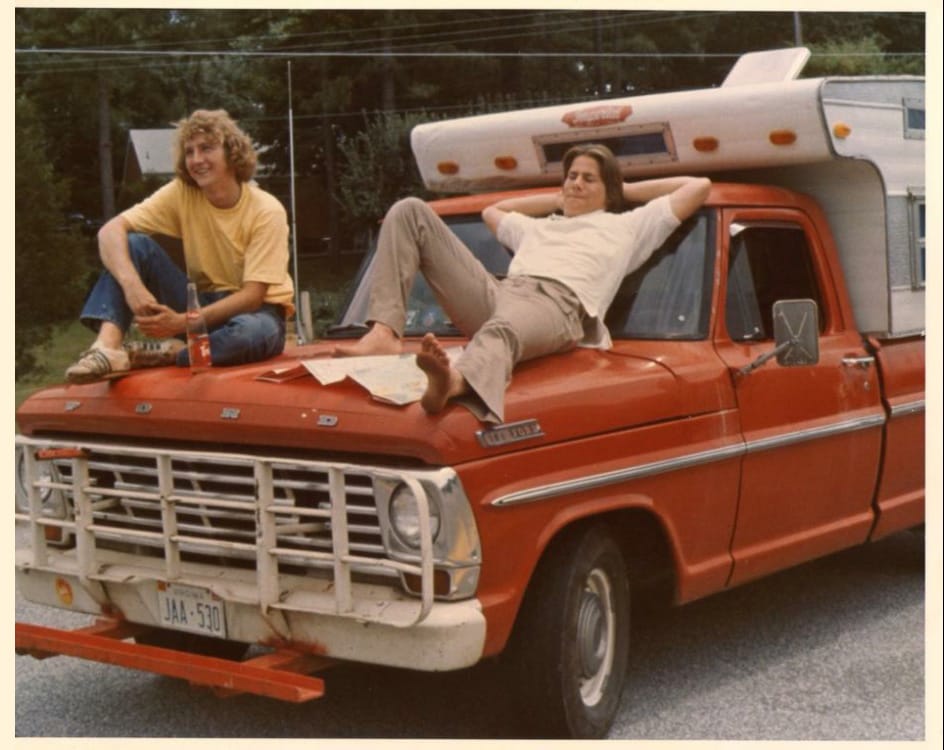
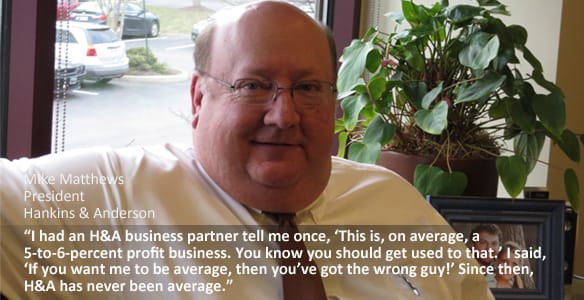

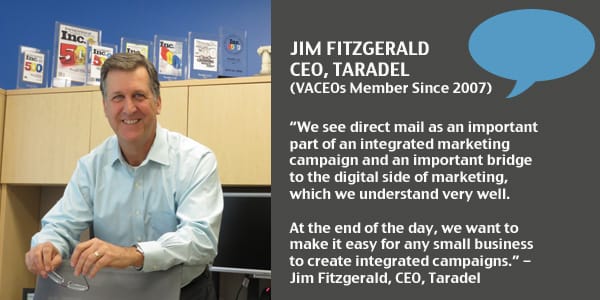
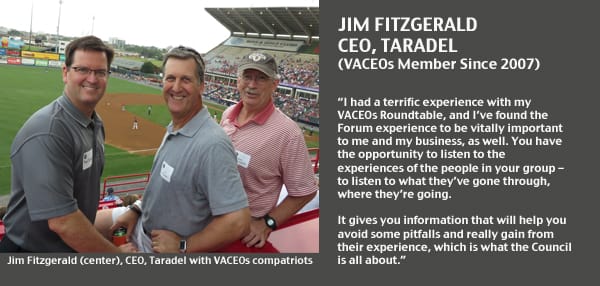
Recent Comments